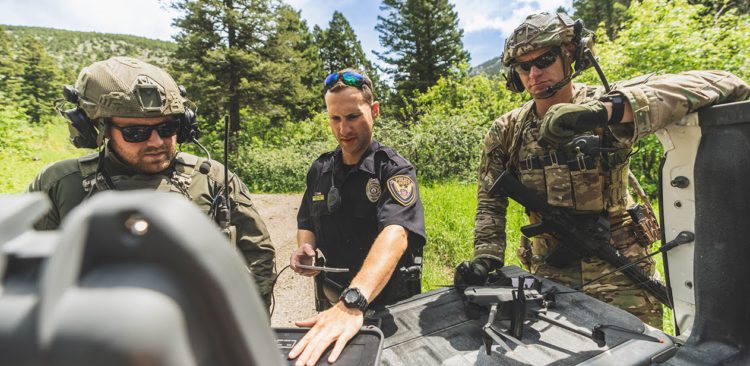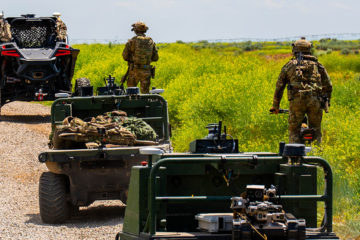3 considerations for increasing innovation across the DoD

As technology rapidly evolves, the U.S. military, government acquisition offices, policymakers, and Congress face increasing pressure to stay ahead of global competitors. To maintain a competitive edge against increasingly sophisticated adversaries, the U.S. Department of Defense (DoD) and other government agencies need to embrace new tools and solutions that fully drive continuous innovation. The government acquisition process has been considered the enemy of innovation for many years. However, the DoD has made massive progress toward streamlining the contract process, identifying new contracting authorities, and funding opportunities to drive innovation.
In a recent episode of the DIB Innovators Podcast, host Dave Graff sat down with goTenna CEO Ari Schuler to discuss goTenna’s strategic pivot from being a customer-focused business to entering the government domain, the challenges of educating government customers about new technologies and the barriers around developing and implementing innovative defense technologies while navigating complex governmental requirements.
During the podcast discussion, Ari shared three essential things the DoD should consider to accelerate innovation.
1. Introduce a culture of accountability for transitions
Every year, the federal government makes strides to drive innovation by investing billions of dollars in new weapons, technology, and research. $122 billion was spent on research and development of weapons and equipment in 2023, according to a report by the Peter G. Peterson Foundation.
Unfortunately, according to a field guide by the U.S. General Services Administration’s 18F team, “Only 13 percent of large government IT projects succeed.” That means most of the technologies that receive these investments never make it into the program of record, which results in the research and development efforts and associated funding not reaching their full potential.
“THERE’S BEEN PROGRESS IN DIFFERENT AGENCIES AND HOW THEY DESCRIBE TRANSITIONS, BUT I DON’T THINK WE HAVE A UNIVERSALLY AGREED-UPON LANGUAGE YET.” –ARI SCHULER
So, how can defense stakeholders make progress in this area to get the most out of their time and investments spent on these programs and technologies?
According to Ari, there needs to be a common metric language to discuss transitions and ensure accountability. “There’s been progress in different agencies and how they describe transitions, but I don’t think we have a universally agreed-upon language yet.”
Once the government establishes a common metric language, the government should solidify this as a benchmark. This step would give DoD organizations and government agencies a metric to measure their adoption of new technologies, increasing accountability and ensuring that new technologies that get funded and meet mission requirements make their way into the mission.
2. Make technology a priority
While advanced technologies could help increase the survivability and lethality of the warfighter while helping drive mission success, senior military leaders or government acquisition offices sometimes hesitate to adopt new technologies for various reasons, such as uncertainty about their effectiveness or a preference for relying on proven legacy systems.
“…IF YOU’RE NOT PRIORITIZING TECHNOLOGY IN THIS DAY AND AGE, YOU WILL LOSE AS AN AGENCY.” –ARI SCHULER
This can present a challenge if the potential benefits of a new technology are not fully recognized, allowing other nations to adopt it and gain a tactical advantage over U.S. armed forces.
According to Ari, “[Agencies] have to make technology a priority. Things are improving on that front… but it has to become part of the platform. It has to become part of the table stakes of taking those jobs and turning [them] into operational results… If you’re not prioritizing technology in this day and age, you will lose as an agency.” The potential risks of not prioritizing technology are significant and could lead to a loss of competitive edge.
DoD contract offices will not adopt new technologies if their leaders don’t prioritize innovation. Senior leaders across the DoD must understand the importance of innovation in keeping pace with near-peer adversaries and prioritize adopting new technologies within their organizations.
3. Stay focused on the mission when building requirements
The biggest weapon and the latest technology might not always be what’s needed for the mission. When developing mission requirements, DoD leaders and contracting offices must keep mission needs in mind so that the solution they develop will best benefit the warfighter in the field.
“There are places [where] you cannot send an aircraft carrier. [Though it may be] a place where an aircraft carrier is by far the best way to project power, there are places where you could lose that carrier potentially,” stated Ari. “It may be best to have a fleet of drone ships [in that situation].”
“WE HAVE TO BE THINKING ABOUT: WHAT IS THE MISSION? WHAT ARE WE TRYING TO DO? WHAT IS THE RIGHT TOOL TO FILL THE GAP?…” –ARI SCHULER
DoD leaders and contracting offices can face a similar problem with innovative technologies. They often will look to push the most capable new technologies into the field to ensure that the warfighter has as many tools available to them as possible. Unfortunately, those more capable technologies might have drawbacks that could jeopardize the mission in other ways.
For example, pushing communications solutions into the field that offer full video communication might be putting the best, most capable communication solution into the hands of the warfighter. However, if that always-on communications solution is easy to identify by a peer adversary’s electronic warfare capabilities, it could put warfighters at risk.
According to Ari, “We have to be thinking about: What is the mission? What are we trying to do? What is the right tool to fill that gap?…sometimes we’re just doing things [because it’s how it’s always been done].”









No Comment